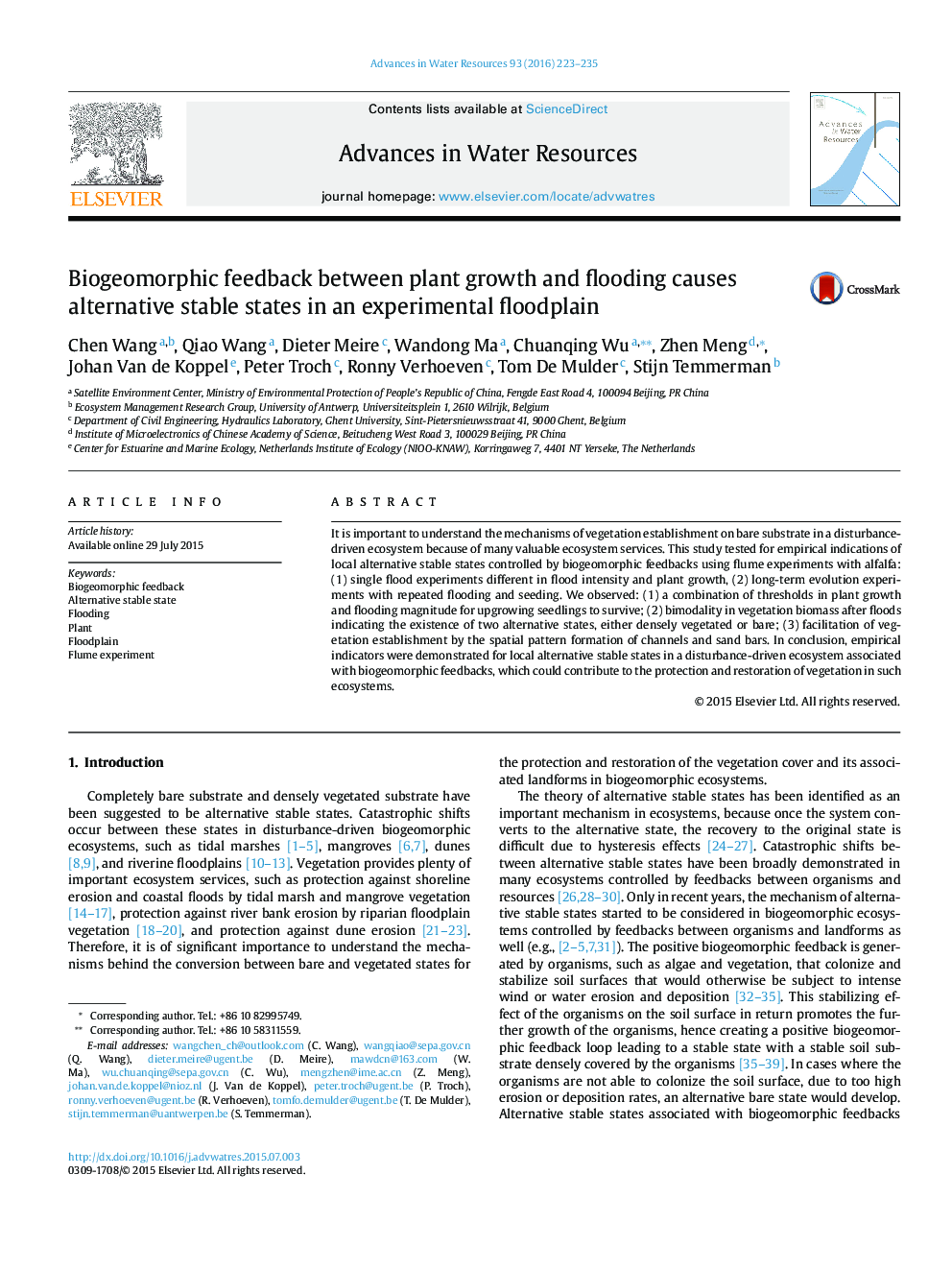| Article ID | Journal | Published Year | Pages | File Type |
|---|---|---|---|---|
| 4525233 | Advances in Water Resources | 2016 | 13 Pages |
•We test biogeomorphic alternative stable states by flume experiments with alfalfa.•Thresholds in plant growth and flooding magnitude determine seedling survival.•A bimodal distribution of vegetation biomass indicates two alternative states.•The spatial pattern formation facilitates the establishment of the vegetated state.•We provide empirical indicators for biogeomorphic alternative stable states.
It is important to understand the mechanisms of vegetation establishment on bare substrate in a disturbance-driven ecosystem because of many valuable ecosystem services. This study tested for empirical indications of local alternative stable states controlled by biogeomorphic feedbacks using flume experiments with alfalfa: (1) single flood experiments different in flood intensity and plant growth, (2) long-term evolution experiments with repeated flooding and seeding. We observed: (1) a combination of thresholds in plant growth and flooding magnitude for upgrowing seedlings to survive; (2) bimodality in vegetation biomass after floods indicating the existence of two alternative states, either densely vegetated or bare; (3) facilitation of vegetation establishment by the spatial pattern formation of channels and sand bars. In conclusion, empirical indicators were demonstrated for local alternative stable states in a disturbance-driven ecosystem associated with biogeomorphic feedbacks, which could contribute to the protection and restoration of vegetation in such ecosystems.
